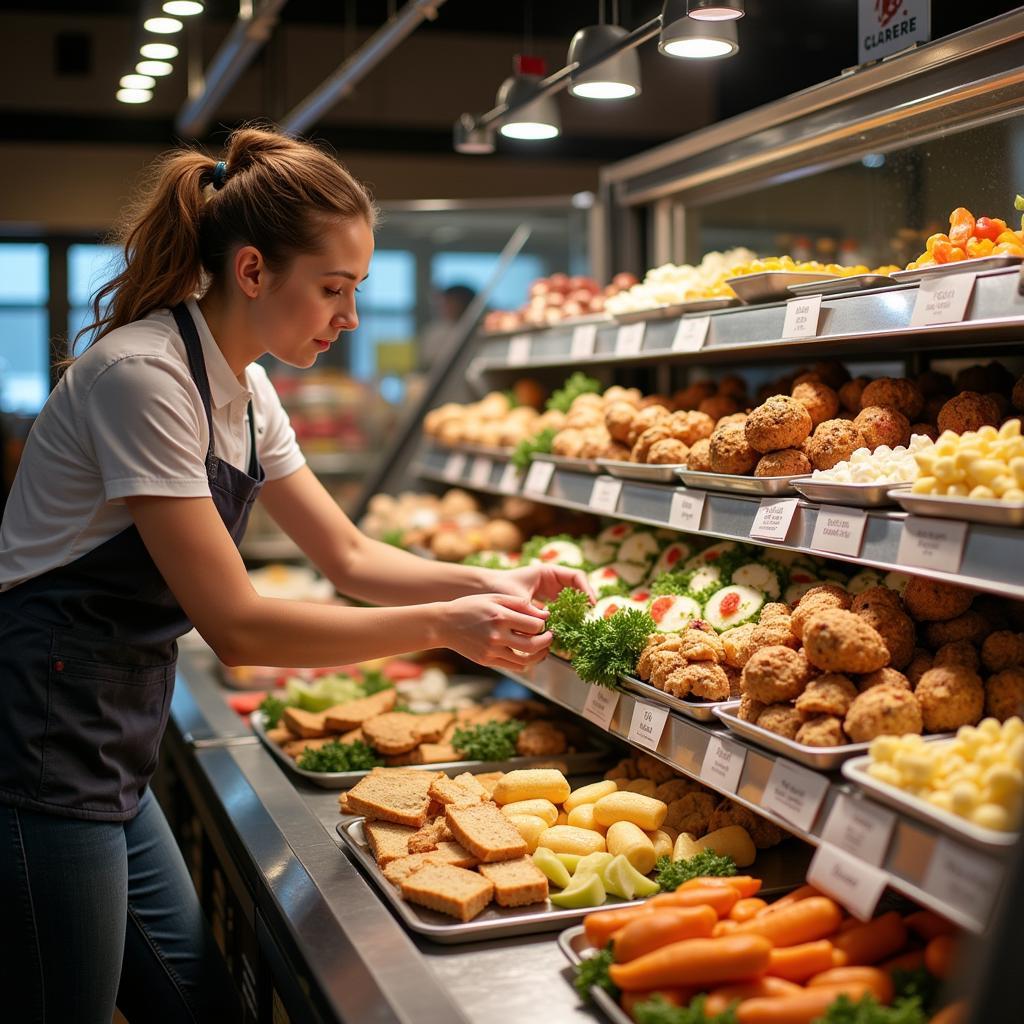Food merchandising is the strategic art of presenting food products to entice customers and drive sales. It involves a delicate dance of visual appeal, placement, and psychology to create an irresistible shopping experience. From supermarkets to cold food display units in convenience stores, effective food merchandising can make or break a business.
Understanding the Role of a Food Merchandiser
A Food Merchandiser is the architect of this enticing experience. They are responsible for everything from stocking shelves and arranging displays to creating eye-catching signage and managing inventory. Their goal? To maximize sales by optimizing product visibility and appeal. A skilled food merchandiser understands consumer behavior and uses that knowledge to strategically position products for maximum impact. They are masters of visual storytelling, transforming ordinary grocery aisles into captivating narratives that inspire purchases.
Key Strategies for Effective Food Merchandising
Effective food merchandising is a multifaceted discipline that encompasses several key strategies. These include:
- Product Placement: Where a product is placed within a store or display significantly impacts its visibility and sales. High-traffic areas, eye-level shelves, and end caps are prime real estate for high-margin items.
- Visual Appeal: Creating visually appealing displays is crucial. This involves using color, lighting, and props to draw attention and highlight the product’s freshness and quality.
- Signage and Labeling: Clear, concise, and informative signage plays a vital role in educating customers about products and promoting special offers.
- Inventory Management: Proper inventory management ensures that shelves are fully stocked with fresh products, minimizing waste and maximizing sales opportunities.
- Pricing Strategies: Competitive pricing and strategic promotions are essential for attracting price-sensitive customers and driving impulse purchases.
What Skills Does a Food Merchandiser Need?
A successful food merchandiser possesses a blend of creative flair and analytical skills. They need to be able to visualize appealing displays, understand consumer behavior, and analyze sales data to optimize their strategies. Strong communication skills are also essential, as they often work closely with store managers, suppliers, and customers.
 A food merchandiser builds an attractive display in a deli case.
A food merchandiser builds an attractive display in a deli case.
The Impact of Food Merchandising on Sales
The impact of effective food merchandising on sales cannot be overstated. A well-executed merchandising strategy can significantly increase sales volume, boost brand awareness, and enhance customer loyalty. By creating an engaging and enjoyable shopping experience, food merchandisers can transform casual browsers into loyal customers.
How does a food case play a role in Food Merchandising?
Choosing the correct food case is crucial for effective food merchandising, especially for items requiring temperature control. A well-maintained and strategically placed food case can significantly enhance the visual appeal and perceived freshness of the products, ultimately boosting sales.
The Future of Food Merchandising
The future of food merchandising is dynamic and ever-evolving. With the rise of online grocery shopping and technological advancements, food merchandisers are constantly adapting their strategies to meet the changing needs of consumers. From interactive displays and personalized recommendations to augmented reality experiences, the future of food merchandising promises to be even more engaging and innovative.
Conclusion
Food merchandising is a crucial element in the success of any food retail business. By understanding the principles of visual appeal, consumer psychology, and strategic placement, food merchandisers can create compelling shopping experiences that drive sales and foster customer loyalty. By embracing innovation and adapting to the ever-changing landscape of the food industry, food merchandisers will continue to play a vital role in shaping the way we shop for and experience food.
FAQs
- What is the primary goal of food merchandising? To increase sales and enhance customer engagement.
- What are some key elements of effective food merchandising? Product placement, visual appeal, signage, and inventory management.
- How does food merchandising impact consumer behavior? It influences purchasing decisions by creating an attractive and engaging shopping experience.
- What skills are important for a food merchandiser? Creativity, analytical skills, communication skills, and an understanding of consumer behavior.
- How is technology changing the field of food merchandising? It is leading to more interactive and personalized shopping experiences.
- What is the role of a crane national 432d cold food unit in food merchandising? It provides an ideal platform for showcasing cold food items in an attractive and temperature-controlled environment.
- How can hot display cases food be effectively used in merchandising? They are excellent for presenting ready-to-eat hot food items, appealing to customers’ senses of sight and smell.
Situations and Questions
Situation: A new cafe owner is struggling to attract customers despite having delicious food.
Question: How can food merchandising improve their business?
Answer: By implementing effective food merchandising techniques, the cafe owner can create a more inviting atmosphere, showcase their best-selling items, and entice customers to try their offerings. A visually appealing display of pastries, strategically placed signage highlighting daily specials, and a clean and organized counter can significantly improve customer traffic and sales.
Other related topics on our website
You might also be interested in learning more about cold food vending machine.
Contact Us
For further assistance, please contact us at Phone Number: 02437655121, Email: minacones@gmail.com or visit our address: 3PGH+8R9, ĐT70A, thôn Trung, Bắc Từ Liêm, Hà Nội, Việt Nam. We have a 24/7 customer service team ready to help.